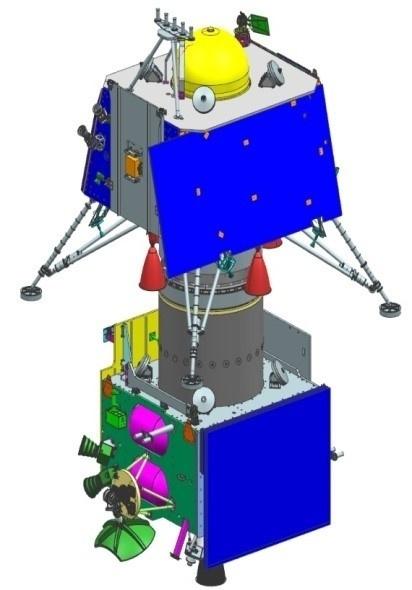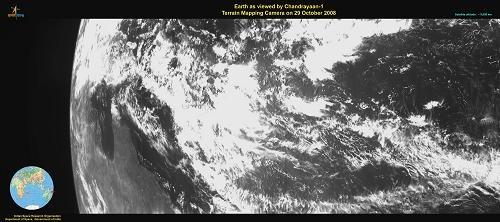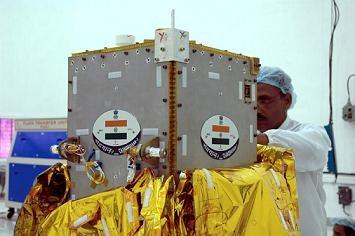On 56th independence day, August 15 2003, India's Prime Minister Atal Bihari Vajpayee announced. "Our country is now ready to fly high in the field of science. I am pleased to announce that India will send her own spacecraft to the moon by 2008. It is being named Chandrayaan-1". In Sanskrit (language of Ancient India) "Chandrayaan" means "Moon Craft".
Indian Lunar Exploration - Chandrayaan is an ongoing series missions by the Indian Space Research Organisation (ISRO). The series includes:
 Chandrayaan-1 - Lunar Orbiter and Impactor
Chandrayaan-1 - Lunar Orbiter and Impactor
Chandrayaan-1, launched on 22 October 2008 aboard a PSLV-XL rocket, was a big success for ISRO as the Moon Impact Probe, a payload on board the Chandrayaan-1 spacecraft, discovered water on the Moon. Chandrayaan-1 mission performed several other tasks such as mapping and atmospheric profiling of the Moon.
 Chandrayaan-2 - Orbiter and Lander and Rover Spacecraft
Chandrayaan-2 - Orbiter and Lander and Rover Spacecraft
Chandrayaan-2 was launched on 22 July 2019 aboard a GSLV Mk III rocket. The spacecraft was successfully put into lunar orbit on August 20, 2019 but the lander was lost while attempting to land on 6 September 2019. The orbiter is operational, collecting scientific data, and is expected to function for 7.5 years.
Chandrayaan-3 - Lander and Rover Spacecraft
In November 2019, ISRO officials stated that a new lunar lander mission was being studied for launch in November 2020. This new proposal is called Chandrayaan-3 and it would be a re-attempt to demonstrate the landing capabilities needed for the Lunar Polar Exploration Mission proposed in partnership with Japan for 2024. This spacecraft configuration would not include launching an orbiter and would have a lander, rover, and a propulsion module, behaving like a communications relay satellite, with mission costing ₹ 250 crore with additional launch costs of ₹ 365 crore for GSLV Mk III. This third mission would land in the same area as the second one. As of April 2022, Chandrayaan-3 is expected to launch in 2023.
Future Missions
Chandrayaan-4 - On site sampling and analysis of collected lunar material
The next mission will be the Lunar Polar Exploration Mission or Chandryaan-4, suggested to be launched in 2025. India is collaborating with Japan in this mission but the mission is not yet defined. It will be a lander-rover mission near lunar pole to perform on site sampling and analysis of collected lunar material and demonstrate lunar night survival technologies.
Chandrayaan-5 - Lander based rotary-percussive drilling
The mission has been suggested for time frame of 2025-30. It will include a lander based rotary-percussive drilling in lunar soil upto a depth of 1~1.5 meters and analysis of cut using instruments. A volcanically and tectonically active area on near side of the moon will be selected for experiment.
Chandrayaan 6 - Drilling of lunar soil followed and return samples to earth
The mission has been suggested for time frame of 2030-35. It will include drilling of lunar soil followed and return samples to earth.


